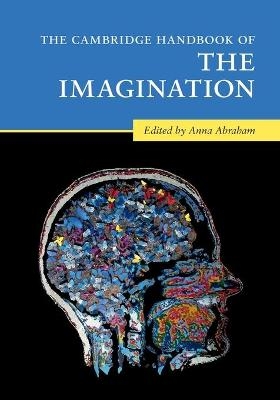
The Cambridge Handbook of the Imagination
Cambridge University Press (Verlag)
978-1-108-45342-4 (ISBN)
The human imagination manifests in countless different forms. We imagine the possible and the impossible. How do we do this so effortlessly? Why did the capacity for imagination evolve and manifest with undeniably manifold complexity uniquely in human beings? This handbook reflects on such questions by collecting perspectives on imagination from leading experts. It showcases a rich and detailed analysis on how the imagination is understood across several disciplines of study, including anthropology, archaeology, medicine, neuroscience, psychology, philosophy, and the arts. An integrated theoretical-empirical-applied picture of the field is presented, which stands to inform researchers, students, and practitioners about the issues of relevance across the board when considering the imagination. With each chapter, the nature of human imagination is examined – what it entails, how it evolved, and why it singularly defines us as a species.
Anna Abraham is the E. Paul Torrance Professor of Creativity and Gifted Education, and the Director of the Torrance Center for Creativity and Talent Development in the College of Education at the University of Georgia.
1. Surveying the imagination landscape; Part I. Theoretical Perspectives on the Imagination: 2. The evolution of a human imagination; 3. Material imagination: an anthropological perspective; 4. The archaeological imagination; 5. Philosophical perspectives on imagination in the Western tradition; 6. Imagination in classical India: a short introduction; 7. From prediction to imagination; 8. Memory and imagination: perspectives on constructive episodic simulation; 9. Capturing the imagination; 10. A sociocultural perspective on imagination; 11. Artificial intelligence and imagination; Part II. Imagery-Based Forms of Imagination: 12. The visual imagination; 13. Musical imagery; 14. Neurophysiological foundations and practical applications of motor imagery; 15. Temporal mental imagery; 16. Emotional mental imagery; 17. Multisensory perception and mental imagery; 18. Evocation: how mental imagery spans across the senses; Part III. Intentionality-Based Forms of Imagination: 19. Continuities and discontinuities between imagination and memory: the view from philosophy; 20. Imagining and experiencing the self on cognitive maps; 21. The neuroscience of imaginative thought: an integrative framework; 22. Imagination and self-referential thinking; 23. Imaginary friends: how imaginary minds mimic real life; 24. Imagination and moral cognition; 25. Moral reasoning: a network neuroscience perspective; 26. The future-directed functions of the imagination: from prediction to metaforesight; Part IV. Novel Combinatorial Forms of Imagination: 27. On the interaction between episodic and semantic representations: constructing a unified account of imagination; 28. How imagination supports narrative experiences for textual, audiovisual, and interactive narratives; 29. Development of the fantasy-reality distinction; 30. Imagining the real: Buddhist paths to wholeness in Tibet; 31. Hypothetical thinking; 32. The counterfactual imagination: the impact of alternatives to reality on morality; 33. A look back at pioneering theories of the creative brain; Part V. Phenomenology-Based Forms of Imagination: 34. Imagination in the philosophy of art; 35. Imagination in aesthetic experience; 36. The arts and human symbolic cognition: art is for social communication; 37. Aesthetic engagement: lessons from art history, neuroscience, and society; 38. Dance and the imagination: be a butterfly!; 39. Imagination, intersubjectivity and a musical therapeutic process: a personal narrative; Part VI. Altered States of Imagination: 40. Dreaming beyond imagination and perception; 41. Dreaming is imagination roaming freely, based on embodied simulation, and subserved by an unconstrained default network; 42. Aphantasia; 43. Hypnosis and imagination; 44. Hallucinations and imagination; 45. The psychiatry of imagination; 46. Meditation and imagination; 47. Flow in performance and creative cognition: an optimal state of task-based adaptation; 48. The force of the imagination.
| Erscheinungsdatum | 30.06.2020 |
|---|---|
| Reihe/Serie | Cambridge Handbooks in Psychology |
| Zusatzinfo | Worked examples or Exercises; 22 Halftones, black and white; 42 Line drawings, black and white |
| Verlagsort | Cambridge |
| Sprache | englisch |
| Maße | 178 x 252 mm |
| Gewicht | 1700 g |
| Themenwelt | Geisteswissenschaften ► Philosophie |
| Geisteswissenschaften ► Psychologie ► Allgemeine Psychologie | |
| Geisteswissenschaften ► Psychologie ► Verhaltenstherapie | |
| Naturwissenschaften ► Biologie ► Humanbiologie | |
| Naturwissenschaften ► Biologie ► Zoologie | |
| ISBN-10 | 1-108-45342-2 / 1108453422 |
| ISBN-13 | 978-1-108-45342-4 / 9781108453424 |
| Zustand | Neuware |
| Informationen gemäß Produktsicherheitsverordnung (GPSR) | |
| Haben Sie eine Frage zum Produkt? |
aus dem Bereich


